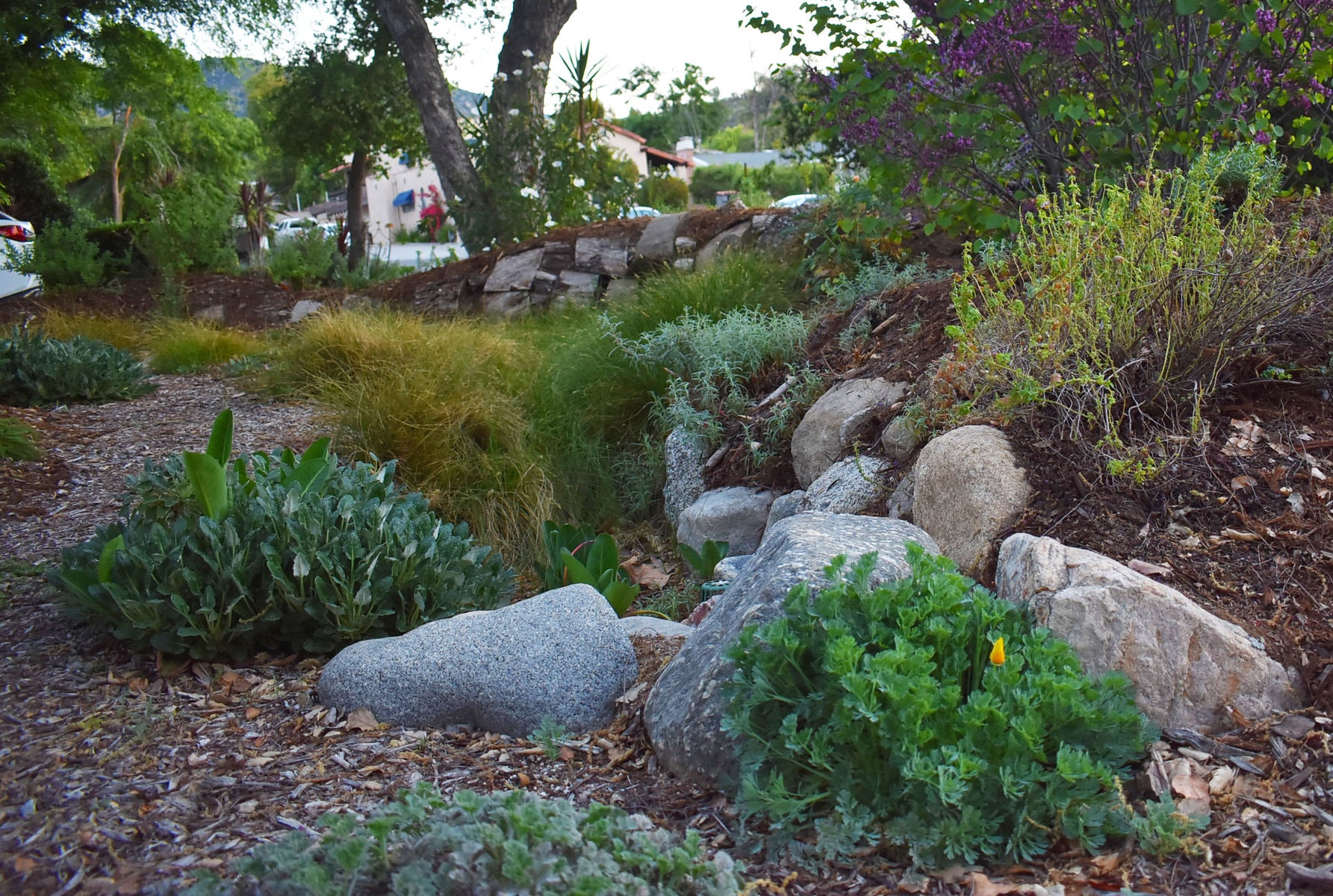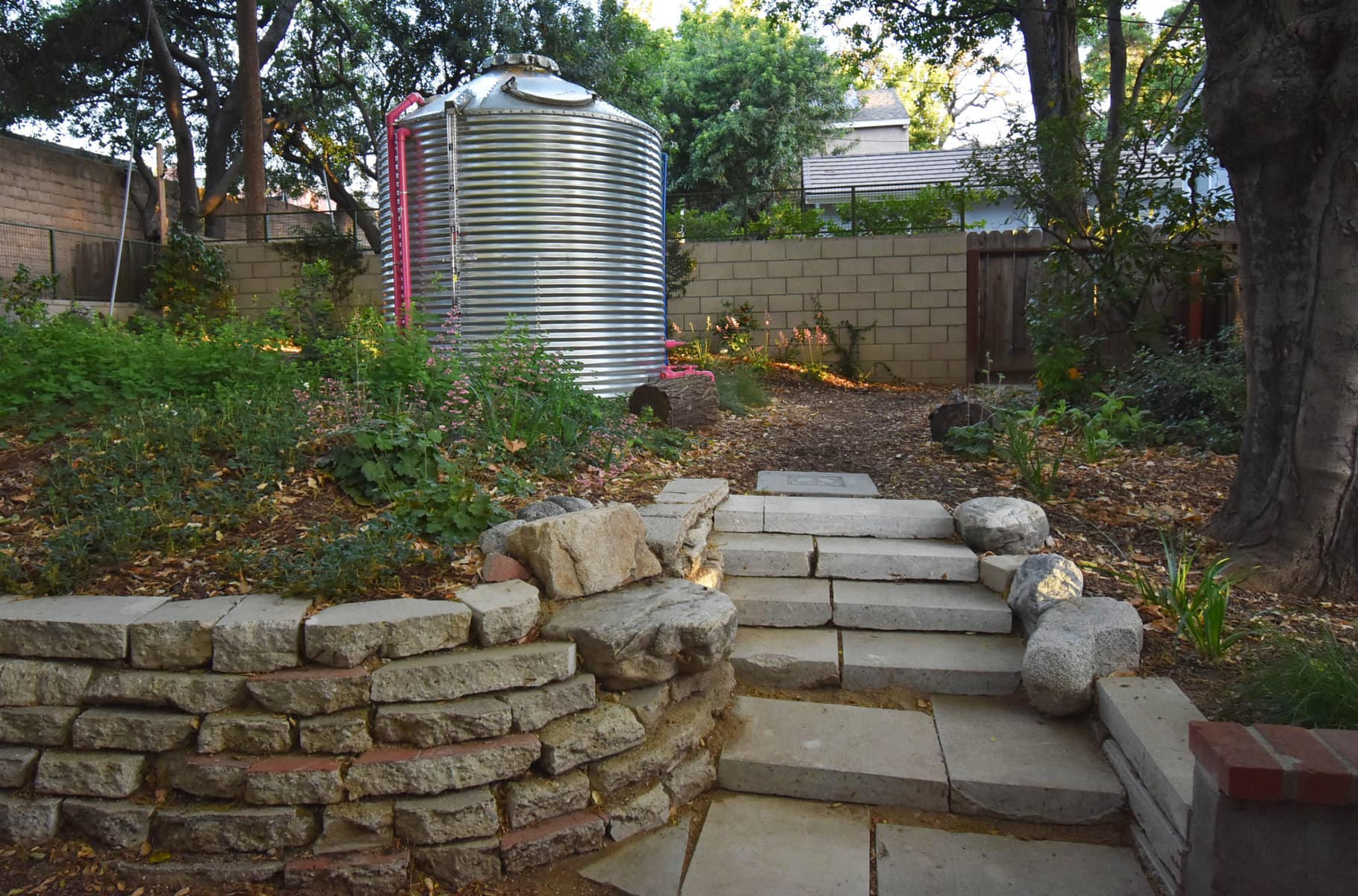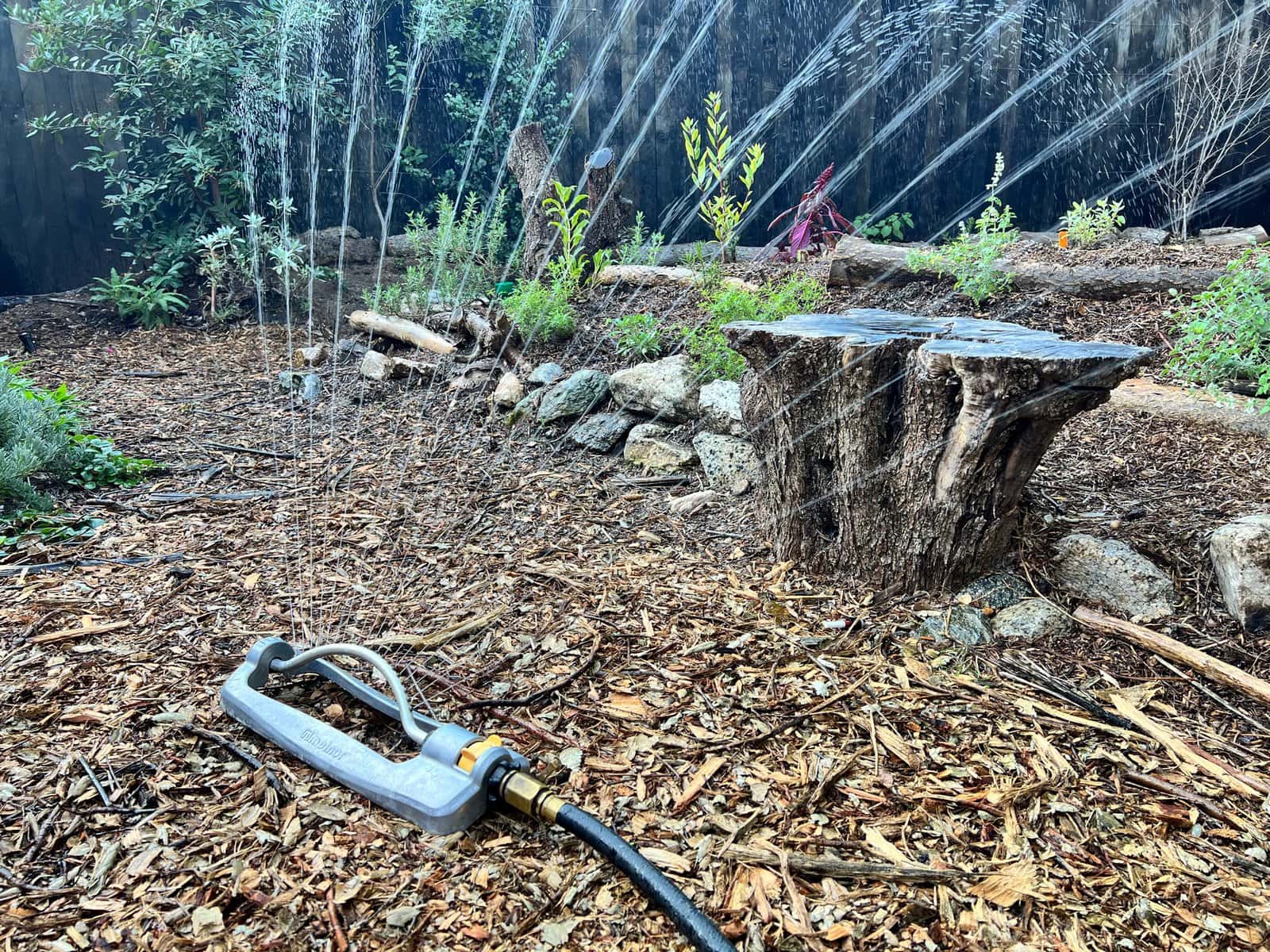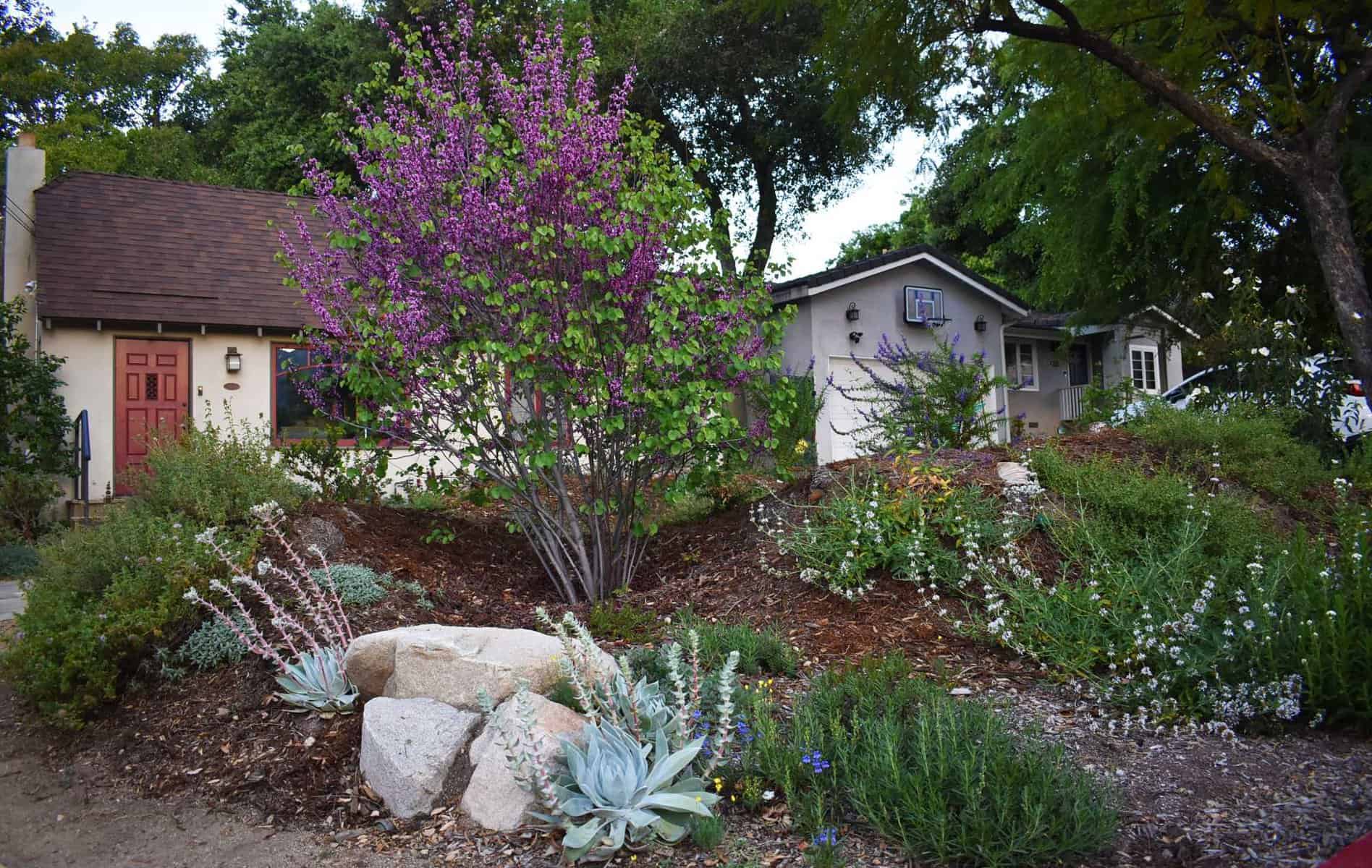Mindfully Irrigating to Get the Most Out of Our SoCal Wet Season
The “wet” season is upon us. At least, that is always the hope here in Southern California where we are dreaming up a slow, consistent drizzle over the next months to thoroughly soak the land, replenish aquifers, and to build up a healthy snowpack in the mountains. We are grateful for last year’s rains that vacillated between mild and heavy and looking forward to more with this coming El Nino winter.
Watering the gardens we cultivate is the ultimate form of hands-on care. It is a juncture between humans and the course of nature each year, where we can enact conscious change in the weather circumstances we are experiencing. The action of unraveling a hose and watering individual plants, or mindfully recalibrating our irrigation controllers, increases our attention to the needs of something outside ourselves. In this case, we focus our attention on the needs of our plant and fungal and microbial friends to whom we owe our very existence.

A water harvesting garden in La Canada in early spring after mindful irrigation practices, which now gets watered once every two to three weeks. Photo credit Studio Petrichor
In our hot, dry region in Southern California, it is not uncommon for the rain to come in short, light sprinkles that barely wash off the dust or pollution that has built up over the summer/fall season. Or, as we’ve seen so far this year, we get slightly heavier showers, which bring a bit more moisture. That moisture will get past the mulch layer, seep into the root zone, and start to replenish our cisterns and rain gardens. Showers like this are the most common type of precipitation that we get in Southern California these days, so we will focus on them for now for the purpose of this message.
At Studio Petrichor, we water before it rains like this because the moisture rarely penetrates the top two inches of the soil layer, if it even goes that deep. Typically, the weather is cooler when it rains, which is another wise reason to water because we lose less moisture to evaporation. It makes sense to want to help that bit of water get deeper into the ground for a couple of reasons: 1) water in the ground is essential for plants and decomposers (fungi and the microbiome), and 2) the soil is now primed and that much more receptive for the next rain, big or small.

A water harvesting garden in La Canada that can irrigate more deeply after a rain event that fills up their cisterns. Photo credit Studio Petrichor
Disclaimer
While we are using our powers of human intervention here to help nature along, it is important not to tip into the bad habit of forgetting our place (and limits) in the larger scheme of things. The goal is not to pretend that we don’t live in a semi-arid climate; the goal is to gently help nature along in the moment, without overstepping our bounds in the long run.
The spirit of the soil raises her arms up in the air with joy, screaming “I AM READY TO RECEIVE!”
You may be asking, “but what about the rain bombs, the atmospheric rivers, the pineapple expresses” and, more recently, the monsoonal rains, which bring an overabundance of water that can’t begin to penetrate dry, hydrophobic soils. These downpours wash away topsoil and mulch, they clog sewer systems, and they eventually flood areas. But if soil is already moistened, much more water is absorbed before the catastrophes can happen, diminishing those deleterious effects.

An oscillating sprinkler, a timer and your hands-on approach may be all that you need. Photo credit Studio Petrichor
This minor shift in thinking and acting will have profound impacts on your garden and local eco-region. We hope people reading this will trust more in the intuitive process of learning and knowing when it is the appropriate time to irrigate so that you can give your water bill AND the local water supply a much-needed break. Enjoy the benefits of inviting water to stay, infiltrate, and source your healthy garden.
Exclaimers
- We don’t allow our irrigation controller to control us. There is a mindful practice afoot for all of those who care for a garden space, to pay attention to the weather and the garden and only water when necessary to optimize water use. In short, manage your own water.
- Many smart controllers turn off when it rains…but you can be the override. Be the smarter controller.
- Planting resilient, native, summer-dry gardens that harvest rainfall is the key to the ideal of water optimization and support of our living systems.
Technology plugs
- Smart, weather-based controllers that you can operate from your phone or home computer are very helpful. For example, we use Hydrawise from Hunter Industries, although many other good products exist.
- An oscillating sprinkler, a hose, and a timer can be your best friend when supporting soil health and contributing to a healthy ecosystem. An oscillating sprinkler mimics rain and can be adjusted to a variety of patterns to water specific areas. A hands on win-win.
- Mulch is the ultimate, and practically free, technology to increase water-holding capacity, period. Where there is carbon in the soil, there is water, when there is water in the soil….there is LIFE. For additional reading on why to prioritize carbon, soil and water…, click HERE.
We thank Anna and the Saturate team for taking such amazing care of the La Canada garden pictured above. We highly recommend this team for a conscious approach to land care for summer-dry gardens!
This garden was also awarded as a 2023 Design Futurist by Pacific Horticulture! Check out the blog HERE for more information.
Wanna talk more about water optimization and rainfall integration? Send an inquiry to info@studio-petrichor.com

